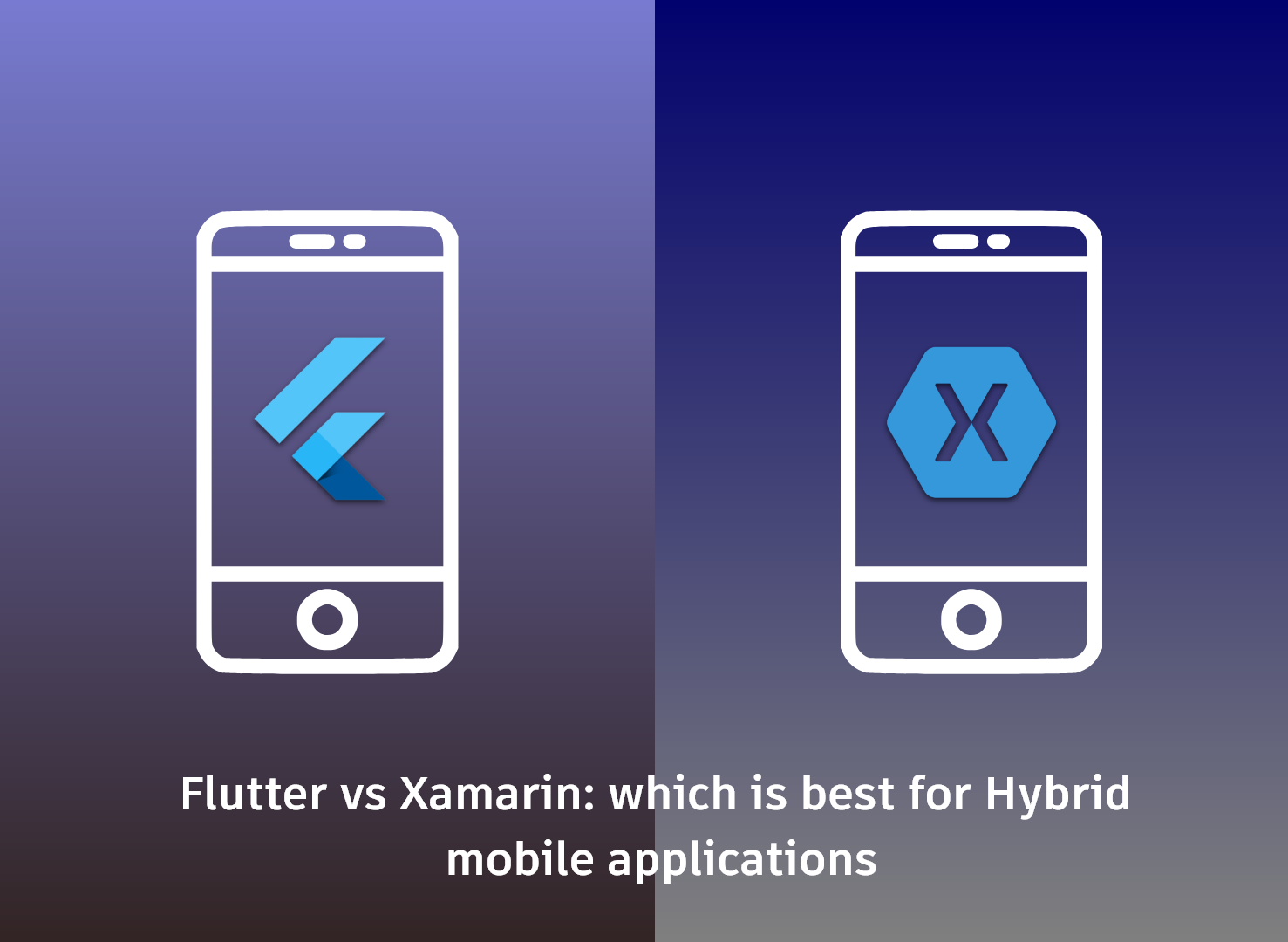Both Flutter and Xamarin are cross-platform mobile app development frameworks that allow you to create apps with a single code base. We now have the opportunity to work with a variety of cross-platform frameworks, such as Xamarin and Flutter. It is easy for developers and entrepreneurs to choose the greatest fit for their projects by comparing their disadvantages, strengths, and features.
Let’s understand each in detail!
Xamarin
Xamarin is a popular cross-platform development framework that allows developers to create programmes that look and behave like native apps. Xamarin founded in 2011 and purchased by Microsoft in 2016.
To create mobile apps for diverse platforms and purposes, Xamarin uses a single programming language, C#, and the.NET framework. It also employs XAML, a markup and data binding language for mobile applications. Xamarin serves as an abstraction layer that allows shared code to be communicated between platforms.
Reasons to Choose Xamarin
Here are the benefits of choosing this framework for the best hybrid mobile app development.
- Exceptional performance
Xamarin applications are noted for having native-like performance metrics. This is due to Xamarin's excellent API optimization and the Xamarin team's relentless pursuit of native-like performance metrics.
- Hot reload
Xamarin just introduced hot reload, which allows you to see changes to your source code in real-time, although it was not included in the initial release. The addition of hot reload enhances and speeds up the developer experience, allowing you to spend more time fine-tuning the details of your Xamarin applications.
- Ecosystem in its entirety
Xamarin provides an unrivalled ecosystem of mobile app development frameworks for creating a wide range of applications. With Microsoft Visual Studio and C#,.NET, and Xamarin, you'll be able to create fantastic cross-platform apps.
- Unparalleled service
For standard interface components you can utilize the Xamarin.Forms API to reuse your code across platforms. You can use Xamarin if you need more precise customization. For more specialized, platform-specific designs, use iOS and Xamarin.Android.
Flutter
In 2018, Google released Flutter, an open-source, cross-platform application and hybrid mobile app development framework that provides developers with a simple cross-platform programming interface while also improving user performance. On contemporary devices, Flutter has been known to attain truly native-like performance. It can also be used to publish web-based apps that are fast.
- Everything is in widgets.
This is not just a big plus, but it's also a lot of fun to look at an almost similar image of the app on different devices.
- Google's strong backing
Google Flutter vs. Xamarin has evolved in tandem with you. It adores and values a new product so much that it's hard to be concerned about the documentation's quality.
- Easy coding and cross-platform development
This opens up a lot of possibilities for reaching a big audience and creating suitable settings for users of various operating systems. It is built on the Dart programming language, which should be familiar to those who have worked with JavaScript and Group C.
- Hot Reload
The fact that Flutter is extremely fast is one of the main reasons for its popularity. You can make changes to your source code and see them on your test device in near-real time thanks to the hot reload feature. As a result, compared to other frameworks, the development process is much more aligned.
Quick Comparison Between Flutter and Xamarin
|
Flutter |
Xamarin |
|
|
Programming Language |
It uses Dart programming language that has a strong feature set as well, although it is less popular and has little community support. |
Since of the large community support for C# developers (and because C# is endorsed by Microsoft), Xamarin is the clear winner in this area. |
|
Installation
|
Flutter is significantly easier and lighter to install because it does not require the use of an IDE. |
The Visual Studio IDE is required for Xamarin installation, whereas Flutter is installed using the command line. |
|
Architecture |
Because of its many natural inherent components, this hybrid mobile app development framework is the clear winner. |
Although the Xamarin architecture appears promising, it lacks strong support for the Kotlin and Swift runtimes. |
|
Developer Productivity |
Flutter is still very new, but as the Flutter community grows, it will quickly catch up. |
As a mature framework, Xamarin provides excellent developer resources and tools. |
|
Community Support |
Flutter is still a very new project, but it has a quickly increasing community. |
The Xamarin community is far larger than Flutter's, owing to Xamarin's popularity. |
|
UI Components & Development API |
Flutter still has a long way to go before it can be used to create complicated user interfaces, animations, and games. |
Xamarin has defeated Flutter in this area thanks to its extensive documentation and development API. |
Flutter vs. Xamarin: What to Choose Between the Two?
Traditional mobile app development methods could be potentially daunting and expensive because apps used to be developed for each platform with different development teams. Cross-platform app development is a clever method of creating mobile apps that can run on multiple platforms.
Many developers believe that Xamarin is the ruler of the cross-platform market, but Flutter, with its clever flexibility, widget availability, and IDE capabilities, is likely to disrupt everything.
If you'd like to learn more about Xamarin and Flutter as frameworks for your applications, leave everything to W3Villa!
As a leading mobile app development company, we have a dexterous crew of mobile app developers who utilize the latest tools and technologies to make your mobile app robust, scalable, and responsive.
Please contact us at and feel free to ask any questions you have.



